WW1: Aerial images reveal World War One's UK footprint
- Published

Temporary buildings were erected in St James' Park during the war
Aerial photographs which show the impact of World War One on the UK landscape have been released as part of a project to mark the war's centenary.
Britain from Above features 95,000 images taken by the company Aerofilms Ltd which show buildings linked to the war effort.
People are now being invited to "tag" the photos by uploading any information they know about the images.
The new information will be shared on its website, external and added to the archives.
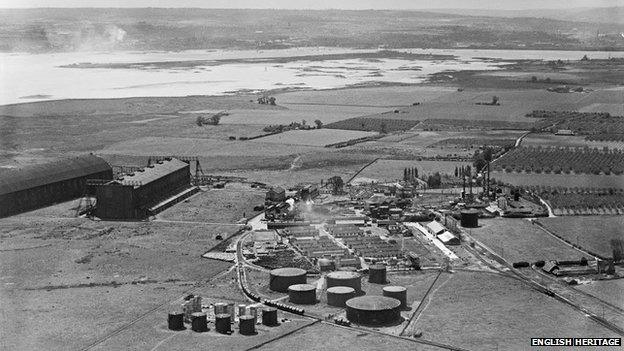
RNAS Kingsnorth, in Kent, was an air station for seaplanes and airships and used mainly as a training station
The pioneering air survey company, Aerofilms, was started in 1919 by WW1 veterans Francis Lewis Wills and Claude Grahame-White in Edgware, north London.
They used aircraft from the London Flying School to reach their vantage points and take their photographs.
By 2006 the company had built up a collection of 1.26 million negatives but the Britain from Above project is now hoping to use people's local and family knowledge to "tag" 95,000 of those images with some context to help build up a better understanding of how Britain looked after the war.
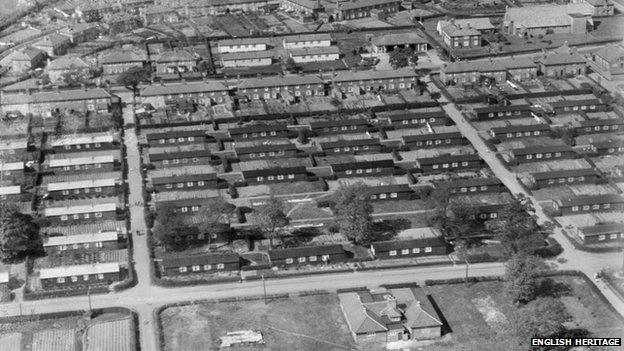
Houses were built for munitions factory workers in Gretna, in southern Scotland
Project manager Charlotte Hill said: "So much is now lost and we need peoples' memories to help build up a picture."
She said it was especially hoped that pictures taken in the 1920s would be tagged because many of the temporary war buildings would have been dismantled after the war and the knowledge and reason for their existence lost with it.
But the collection also demonstrates some of the nation's wartime strategy, such as one picture of an empty lake in St James' Park, Westminster.
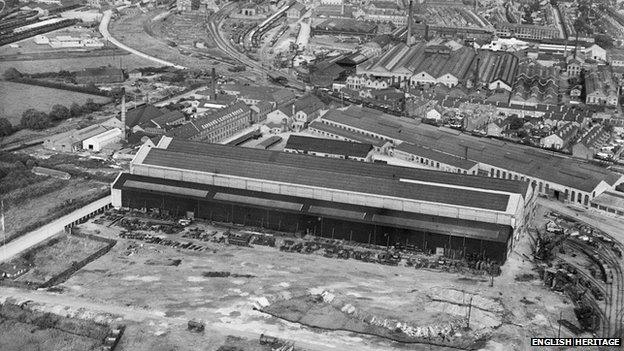
Lincoln's Ruston and Hornsby Spike Island Engineering Works was used to produce guns and bombs
The thinking behind a dry lake was to prevent enemy aircraft seeing any reflection from the water and helping them to identify Buckingham Palace or Whitehall nearby.
Another reveals the construction of a war memorial in Nottingham.
Simon Thurley, chief executive of English Heritage, said he hoped members of the public would "turn detective" and use their local or family knowledge to identify the many "un-located remains".

The War Memorial in Nottingham was photographed while it was being built
He said: "Sites needing to be tagged might be defence structures erected on the coast or secret listening stations that intercepted enemy communications.
"Or perhaps you know of a local drill hall where a relative went to sign up or a training camp where they were prepared for the front or was there a prisoner-of-war camp in your area?"
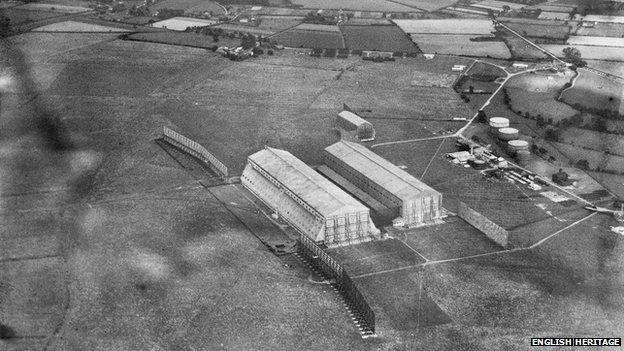
Pulham St Mary, in Norfolk, was one of the main British airship stations with more than 3,000 men on the base by 1918
As well as tagging, users will also be able to upload contemporary photos or pictures of relatives who were associated with the site on the website.
Britain from Above has been funded to run for four years and a £1.7m Heritage Lottery Fund grant will be used to conserve, catalogue and make the photographs available online.
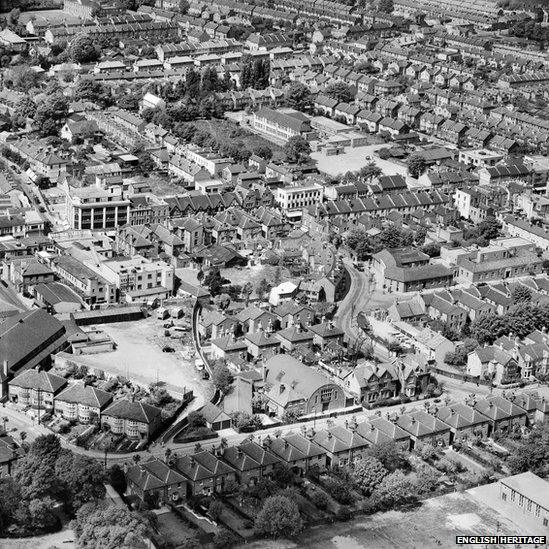
Drill Hall in Sutton was home to the East Surrey Regiment
The developed records will also be used to help inform planning decisions and safeguard WW1 remains for future generations, English Heritage said.
Some of the newly-tagged sites will also be published in a book on to be published at the end of the centenary period.
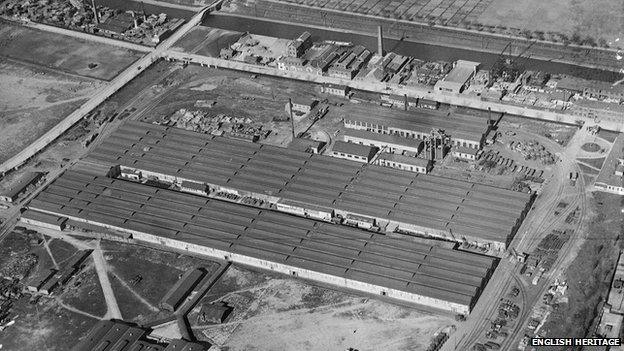
About 35 acres of Hackney Marshes, in east London, were used to build the National Projectile Factory in 1915
- Published11 July 2014
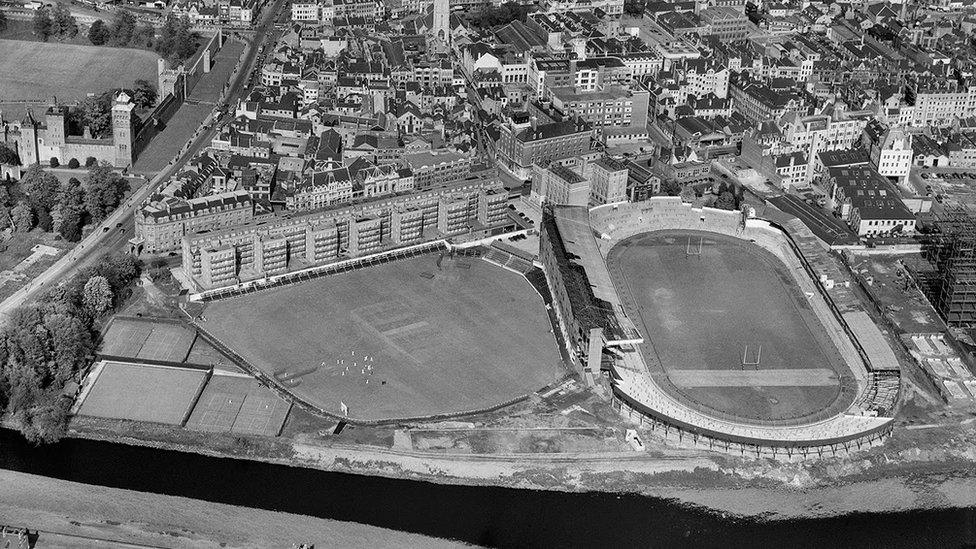
- Published25 February 2014